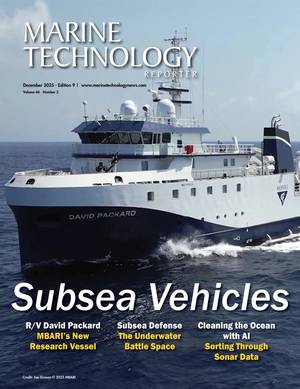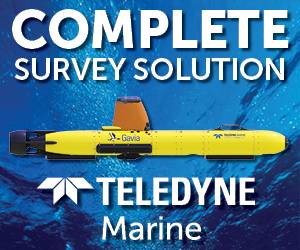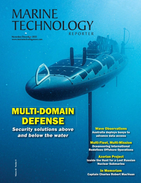Underwater Exploration Technology
For the first time, the reality of science fiction movies and ancient scientists’ dreams, such as Leonardo Da Vinci, Plato, Aristotle has taken shape into our real world as well, and the ocean environment, the deep-sea creatures, the unique habitats in mysterious, the hidden places of the sea are no longer the product of human imagination, but rather of scientific exploration. And all this happened due to the incredible advances of underwater exploration technology, which includes various vessels, underwater manned and unmanned vehicles, diving technologies and scientific observations tools.
Precursors of underwater exploration technology
The evolution of underwater exploration has been greatly influenced by people’s desire to find lost treasures, and the sunken Spanish ships, carrying fortunes in gold and silver in the 1600s was a serious catalyst for undersea investigations. The Dutch East India Company, in particular, was the international sea trader to offer the greatest rewards for the recovery of salvaged items. Given the rewards of large companies in search for lost goods, many private investors pooled resources into the evolution of underwater exploration technology that could help them win the treasure hunt over their competitors.
However, it wasn’t until 1690 when the grandfather of submarines was patented by Edmond Halley – a diving bell that allowed those interested to scan the depth of the waters from an enclosed hemisphere of air that could go as deep as 60 feet and resist underwater for 90 minutes. In time, these diving bells have evolved greatly and they are still present nowadays as well; now they can go at depths of 1,000 feet (or 305 meters).
Another ancestor of today’s submersibles was the diving engine, patented in 1715 by John Lethbridge. It was a wooden machine, 6 feet long and 2 and half feet in diameter and featured leather gauntlets for the diver to put his hands into. Using this machinery, a person could go 60 feet deep and work undersea for maximum 30 minutes.
Consequences of divers’ work under high pressure
The intense efforts of early divers to resist underwater for as long as possible came with a high price for their health, because both water and air have weight, measured in atmospheres. The deeper the divers go, the higher this pressure, as there is more water and air above them. Each 33 feet of ocean water (with salt) means 1 atmosphere and the pressure the diver feels is 1 atmosphere (from the air) plus the water pressure. As the diver goes deeper into the ocean, the air in his body compresses. The air spaces in his body (in areas like ears or lungs) become like vacuums, because the compressed air causes a negative pressure and this might lead to pain and damage to the most delicate membranes. If the diver descents too quickly, the excess nitrogen forms bubbles in his tissues, leading even to strokes, paralysis, spasms, joint pain, or heart attack.
Today’s underwater exploration technology
Submersibles were the first underwater vehicles that could resist in high depths for a long period of time. Over the last decades, the technology used in submersibles production has evolved in order to meet the many challenges of the undersea world. Using this constantly-evolving technology, many new areas of the ocean, habitats for unknown life, were discovered; among these, many ecosystems were believed not to exist in some environments, without light and very little food to live on.
One of the oldest submersibles, invented in 1964, is Alvin, created by the Woods Hole Oceanographic Institution (WHOI), by engineer Allyn Vine. Alvin was the first underwater vehicle that could carry up to three passengers – a pilot and two assistants, diving untethered for 35 feet at the beginning. In time, after numerous improvements and upgrades, Alvin can now go as deep as 14,764 ft.
The Autonomous Benthic Explorer was invented in the mid 90’s, and is the first piece of underwater exploration technology that can operate without the guidance of a human aboard a vessel. It needs no remote control, no umbilical, no human passenger to operate it, it can cover large areas of underwater terrain and is used mainly in underwater monitoring and research.
Diving with SCUBA (the "self-contained underwater breathing apparatus") was first possible in 1940 and many scientists, underwater photographers and recreational divers have taken advantage of this new technology. Scuba diving, however, cannot protect the human body against the increasing water pressure, making the deep-water exploration impossible. Undersea ecosystems worth exploring are usually situated deeper than 40 feet, and many types of scuba equipment simply cannot face this challenge.
Highly sophisticated observation tools are the most precious assets of any marine researcher. They can successfully handle the most hostile environments on Earth, which can only be accessed with upgraded underwater exploration technology.
The Acoustic Doppler Current Profiler (ADCP) is one of the most common tools used in undersea exploration. It is able to measure the speed and direction of ocean currents, based on the Doppler Effect. Hydrophones submerged in water use piezoelectricity to collect the sounds in this environment, which are later amplified and recorded. The most utilized ocean acoustic monitoring device is the sonobuoy, which is able to record the sound of enemy submarines. Consequently, it is of great use to navies during combat.
Charles Fisher is the inventor of the "Bushmaster" and "Chimneymaster" – two pieces of underwater exploration technology that can collect communities around hydrothermal vents, while clod carts are instruments that record the conductivity, temperature and depth of water columns. In addition to these tools, scientists use drifters that register real-time information on ocean circulation patterns, used to make predictions on future hurricanes occurrence, or where pollutants like oil or sewage go if accidentally spilled into the sea.













 December 2025
December 2025



